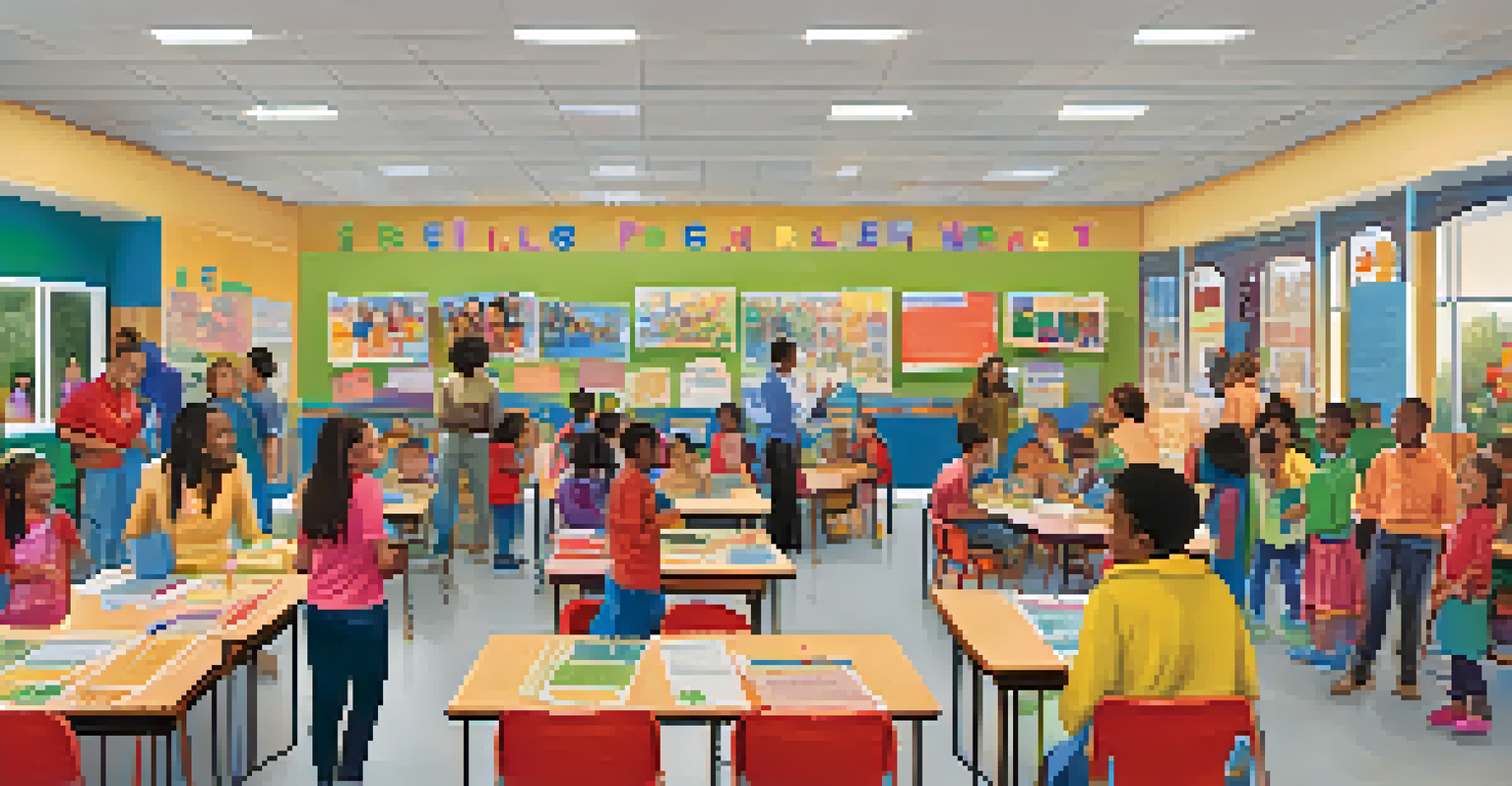Creating Inclusive Learning Pathways for All Students

Understanding Inclusive Learning: What It Means
Inclusive learning refers to educational practices that ensure all students, regardless of their backgrounds or abilities, have equal access to learning opportunities. It’s about breaking down barriers that might hinder a student’s ability to thrive in a classroom setting. For instance, a visually impaired student should have the same opportunities to engage with materials as their sighted peers.
Inclusive education is not a privilege, but a right for every child.
To create an inclusive environment, educators must recognize the diverse needs of their students. This includes varying learning styles, disabilities, and cultural backgrounds. Acknowledging these differences is the first step toward creating an educational setting where every student feels valued and supported.
Ultimately, inclusive learning is not just about accommodating students with special needs; it’s about fostering a community where everyone learns from one another. When students from different backgrounds collaborate, they bring unique perspectives that enrich the learning experience for all.
Identifying Barriers to Inclusion in Education
Barriers to inclusion can take many forms, from physical obstacles in the classroom to attitudinal biases among educators and peers. For example, a lack of accessible resources can significantly hinder a student with mobility challenges. Identifying these barriers is crucial for creating effective inclusive practices.

Moreover, some students may face social barriers, such as bullying or exclusion due to differences in learning pace or style. These challenges can impact a student’s confidence and willingness to participate in class activities. Understanding these social dynamics is essential for fostering an inclusive classroom environment.
Inclusive Learning Benefits Everyone
Inclusive learning fosters a classroom environment where all students can thrive, promoting collaboration and diverse perspectives.
By actively seeking out and addressing these barriers, educators can create a more equitable learning experience. This not only benefits students with disabilities but enhances the educational journey for all students by promoting empathy and collaboration.
Designing Flexible Learning Pathways for All
Flexible learning pathways allow students to choose their own educational routes, catering to their individual strengths and interests. This approach can include options like project-based learning, online courses, or hands-on experiences that align with students' diverse learning styles. For instance, a student passionate about art might thrive in a visual project rather than a traditional essay.
Diversity is the one true thing we all have in common. Celebrate it every day.
Additionally, providing varied assessment methods can help gauge student understanding in a way that suits their learning preferences. Some may excel in oral presentations while others might prefer written assignments. By allowing students to showcase their knowledge in different formats, educators promote a sense of ownership over their learning.
Creating these flexible pathways encourages students to take an active role in their education. When students feel empowered to choose how they learn, they are more likely to engage deeply and enjoy the process.
Utilizing Technology for Inclusive Learning
Technology plays a pivotal role in making education more inclusive. Tools like screen readers, captioning software, and interactive learning platforms can help bridge gaps for students with disabilities. For instance, a student with hearing impairments can benefit from real-time captions during lectures, ensuring they don’t miss crucial information.
Moreover, online learning platforms can offer personalized learning experiences, allowing students to progress at their own pace. This flexibility can be especially beneficial for students who may need additional time to grasp complex concepts. By integrating technology, educators can cater to a wider range of learning needs.
Technology Enhances Accessibility
Utilizing technology in education can bridge gaps for students with disabilities, allowing for personalized and flexible learning experiences.
However, it’s essential to ensure that all students have access to these technological resources. Providing training for both educators and students can help maximize the benefits of technology in the classroom and promote an inclusive learning environment.
Promoting Collaborative Learning Among Students
Collaborative learning involves students working together to solve problems or complete projects, fostering a sense of community. This approach not only builds social skills but also encourages students to learn from one another’s strengths. For example, a group project might allow a student who excels in research to support a peer who is great at presenting.
Creating diverse groups that mix students of different abilities and backgrounds can enhance this experience. When students collaborate with peers who think differently, they learn to appreciate diverse viewpoints and develop critical thinking skills. This inclusivity can lead to richer discussions and more innovative solutions to problems.
To promote collaborative learning effectively, educators should establish clear guidelines and support systems. Providing structure helps ensure that every voice is heard and valued, making collaboration a truly inclusive experience.
Engaging Families in the Inclusive Learning Process
Involving families in the educational process is vital for creating inclusive learning pathways. When educators engage with parents and guardians, they gain insights into their children’s unique needs and backgrounds. For instance, a family might share information about cultural practices that can be integrated into the curriculum, enriching the learning experience for all students.
Furthermore, fostering open communication between schools and families encourages a collaborative approach to education. Regular updates on student progress and challenges help families feel more connected and invested in their child’s learning journey. This partnership can lead to tailored support that addresses specific learning needs.
Family Engagement is Key
Engaging families in the educational process supports tailored learning paths and strengthens the connection between home and school.
Ultimately, when families are actively engaged, students are more likely to succeed. This collective effort creates a supportive network that enhances the overall educational experience.
Assessing Progress and Celebrating Successes
Regular assessment of students' progress is essential for understanding the effectiveness of inclusive learning pathways. By utilizing diverse assessment tools, educators can gauge where students are excelling and where they may need additional support. This ongoing evaluation helps ensure that every student is on a path to success.
Celebrating successes, no matter how small, is equally important. Recognizing achievements boosts student morale and reinforces the value of hard work. For example, highlighting a student’s improvement in a particular skill can motivate others to strive for their best.

Creating a culture that embraces both assessment and celebration fosters an environment where students feel safe to take risks and learn from their mistakes. This positive atmosphere is crucial for nurturing an inclusive educational experience.